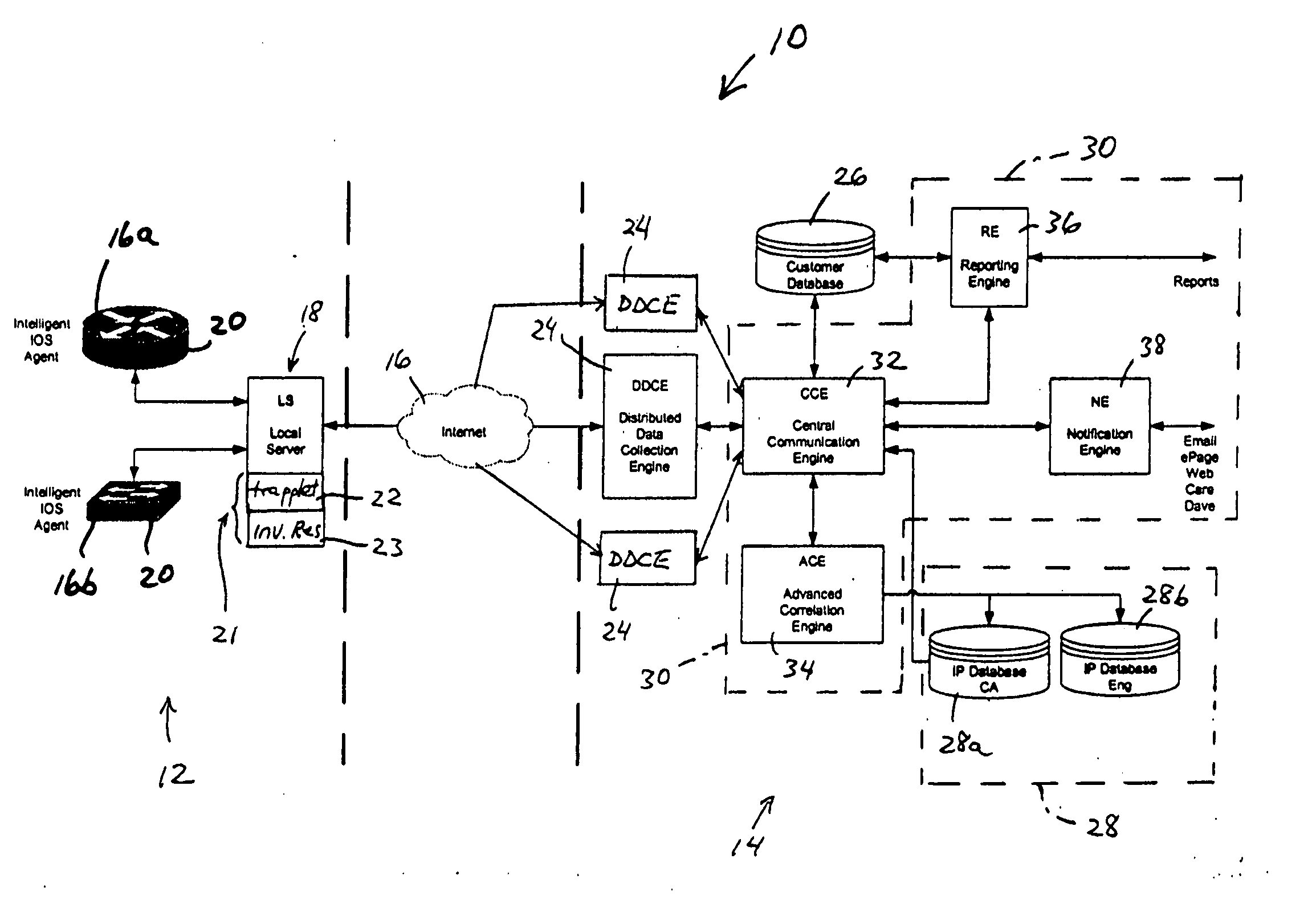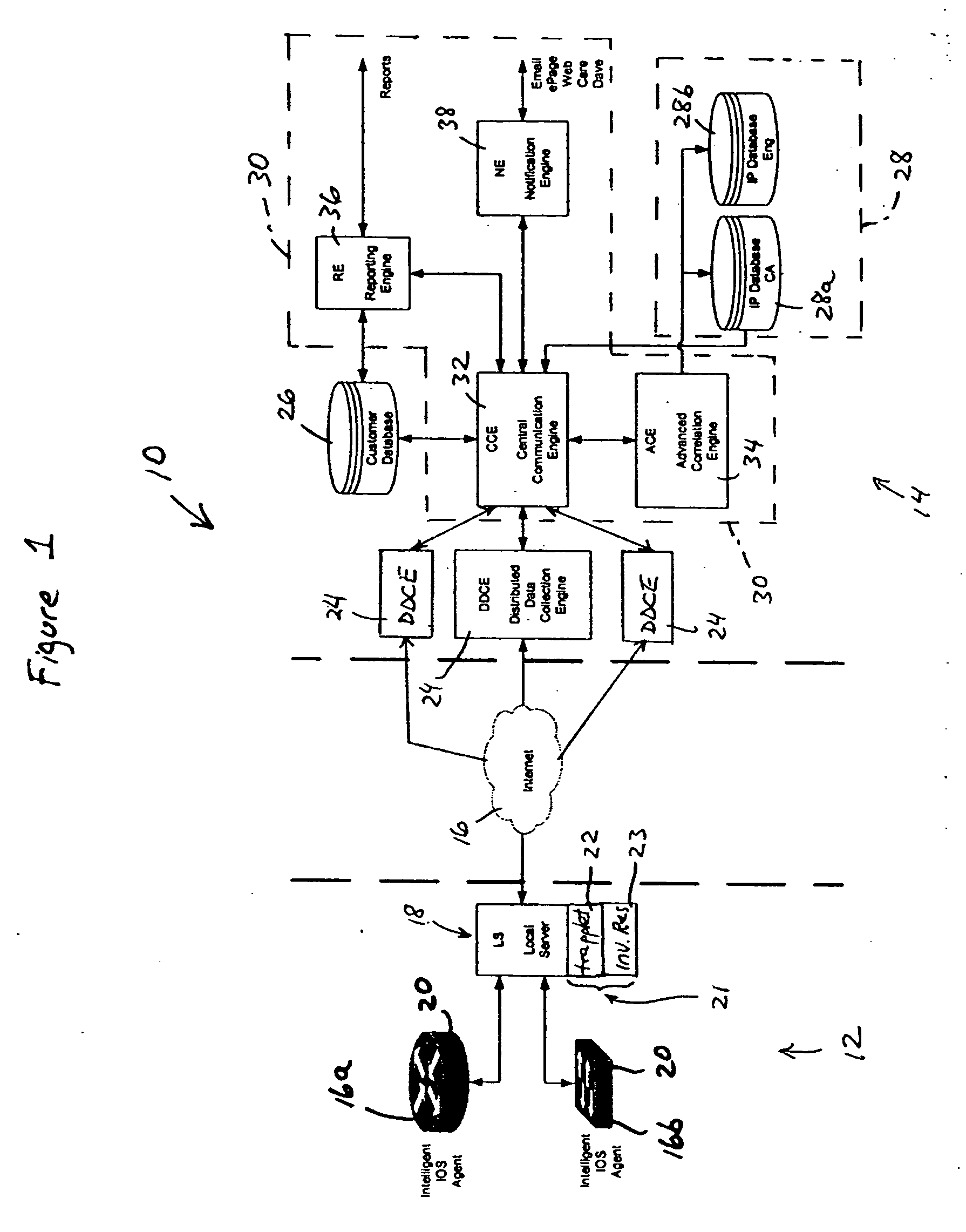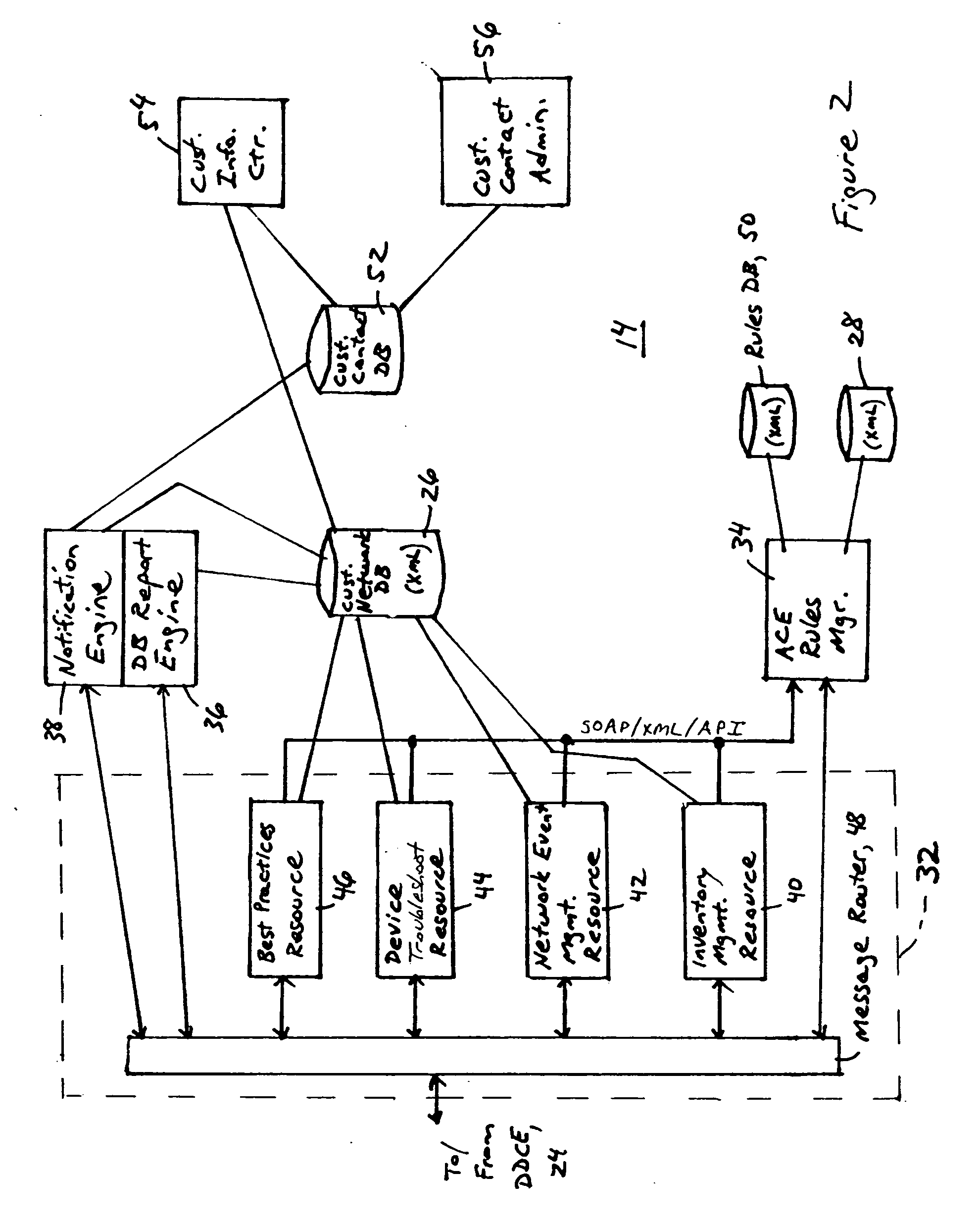Arrangement for automated fault detection and fault resolution of a network device
a network device and automatic technology, applied in the field of network management systems, can solve the problems of inefficient human-web page interface for network managers, ineffective use of web page based sources for troubleshooting information, and inability to automatically detect faults, etc., and achieve the effect of reducing service loss
- Summary
- Abstract
- Description
- Claims
- Application Information
AI Technical Summary
Benefits of technology
Problems solved by technology
Method used
Image
Examples
Embodiment Construction
[0026]FIG. 1 is a block diagram illustrating a system 10 for providing automated fault detection and fault resolution in a network, according to an embodiment of the present invention. The system 10 provides automated support services, including predictive health monitoring of network devices, proactive notifications of updated resources and troubleshooting techniques, and automated fault detection and resolution based on detected network device conditions. The system 10 provides automated support services based on coordinated information transfer between customer premises based resources 12, and centralized support resources 14 implemented for example within the device manufacturer's network infrastructure. The information transfer between the customer premises based resources 12 and the centralized support resources 14 is implemented via secure connections via an Internet Protocol (IP) network 17, for example the Internet. Hence, the integration of device and infrastructure inform...
PUM
 Login to View More
Login to View More Abstract
Description
Claims
Application Information
 Login to View More
Login to View More - R&D
- Intellectual Property
- Life Sciences
- Materials
- Tech Scout
- Unparalleled Data Quality
- Higher Quality Content
- 60% Fewer Hallucinations
Browse by: Latest US Patents, China's latest patents, Technical Efficacy Thesaurus, Application Domain, Technology Topic, Popular Technical Reports.
© 2025 PatSnap. All rights reserved.Legal|Privacy policy|Modern Slavery Act Transparency Statement|Sitemap|About US| Contact US: help@patsnap.com



